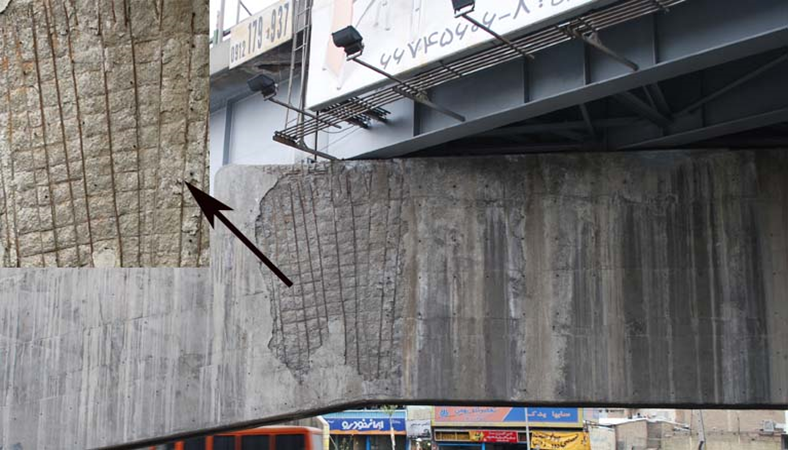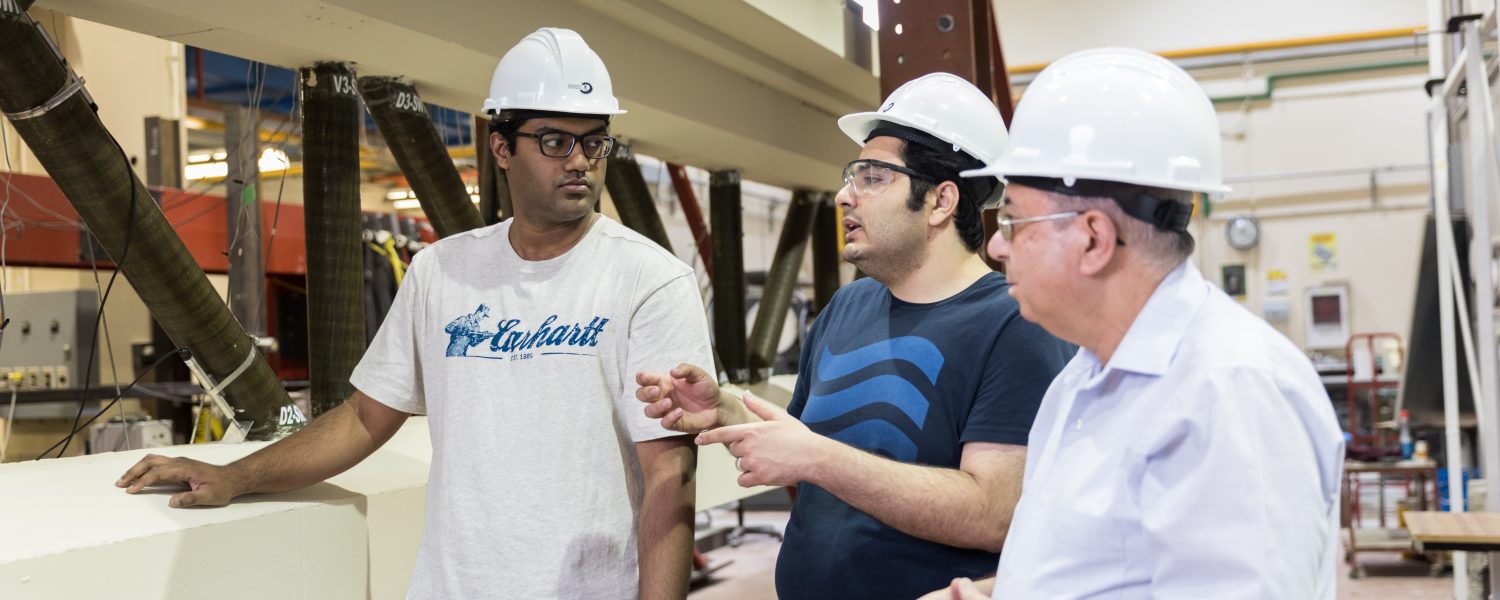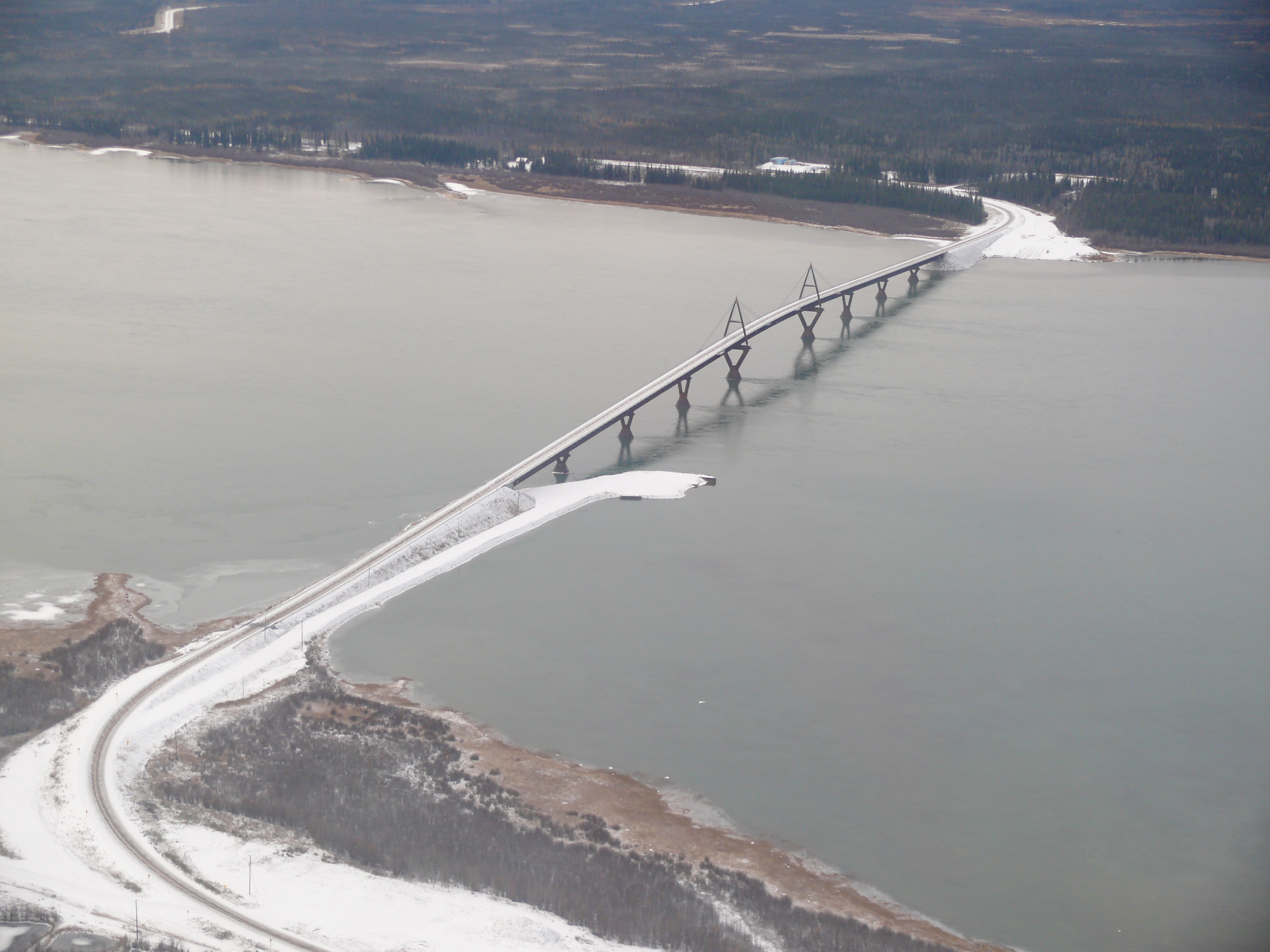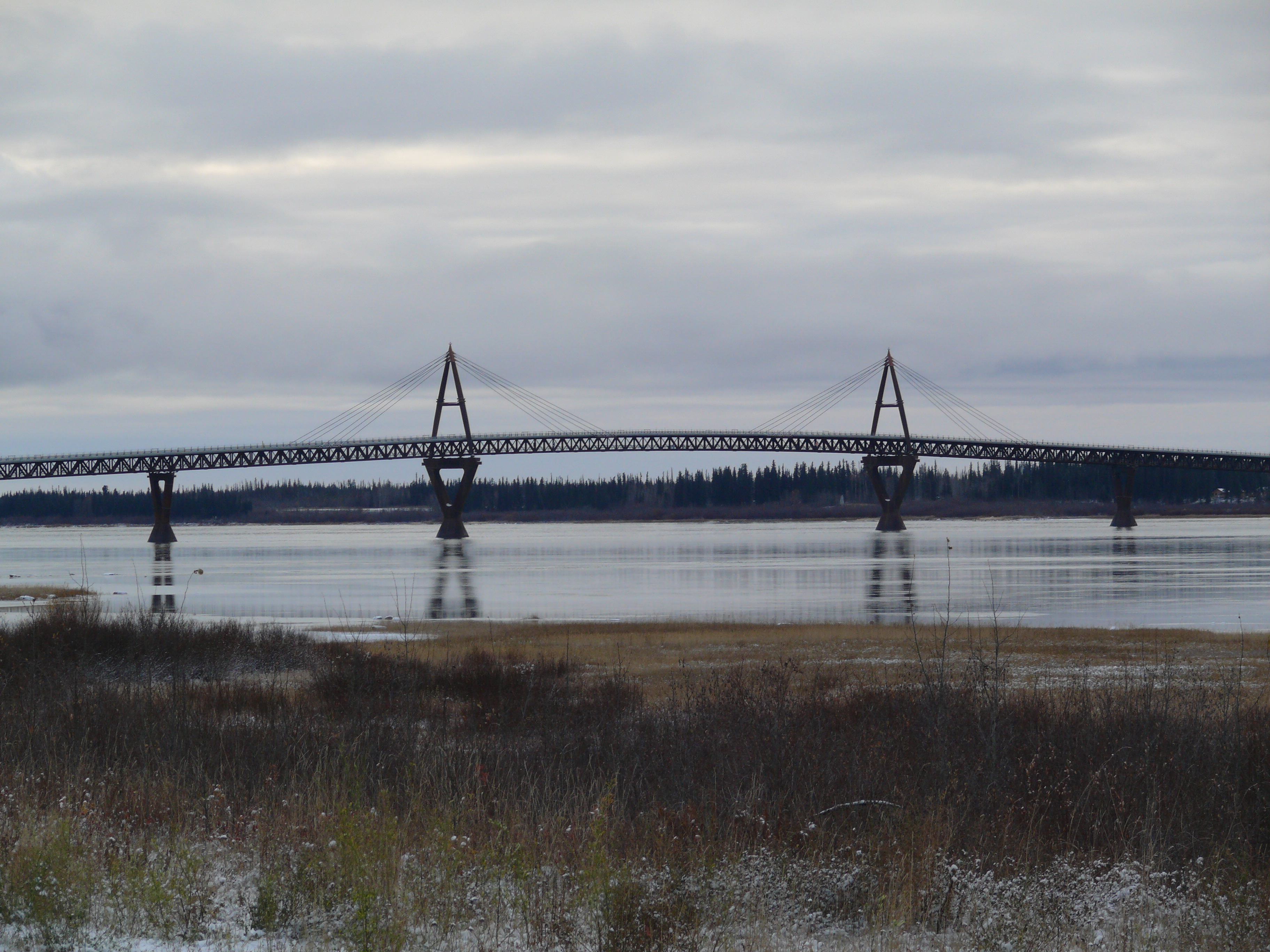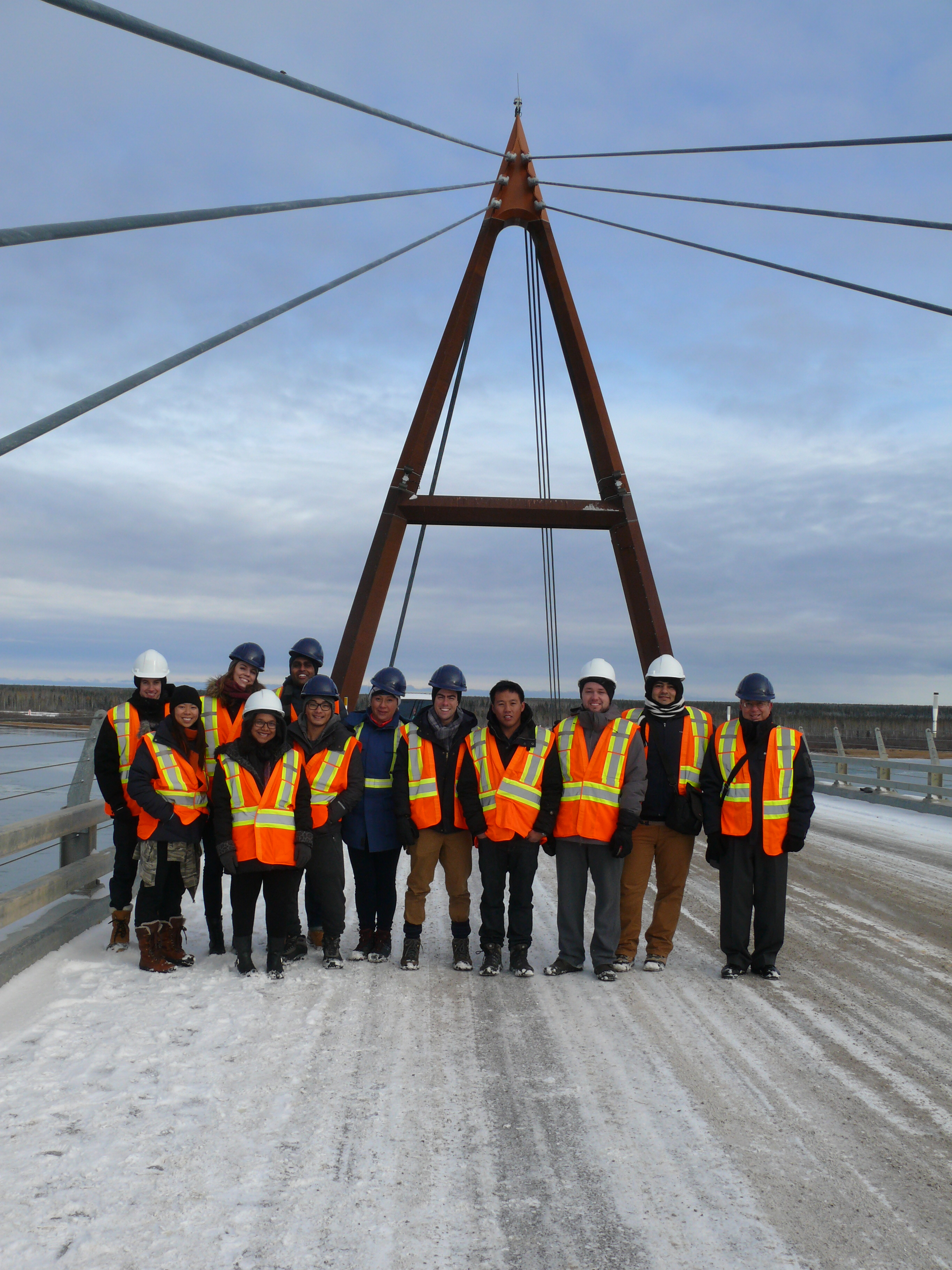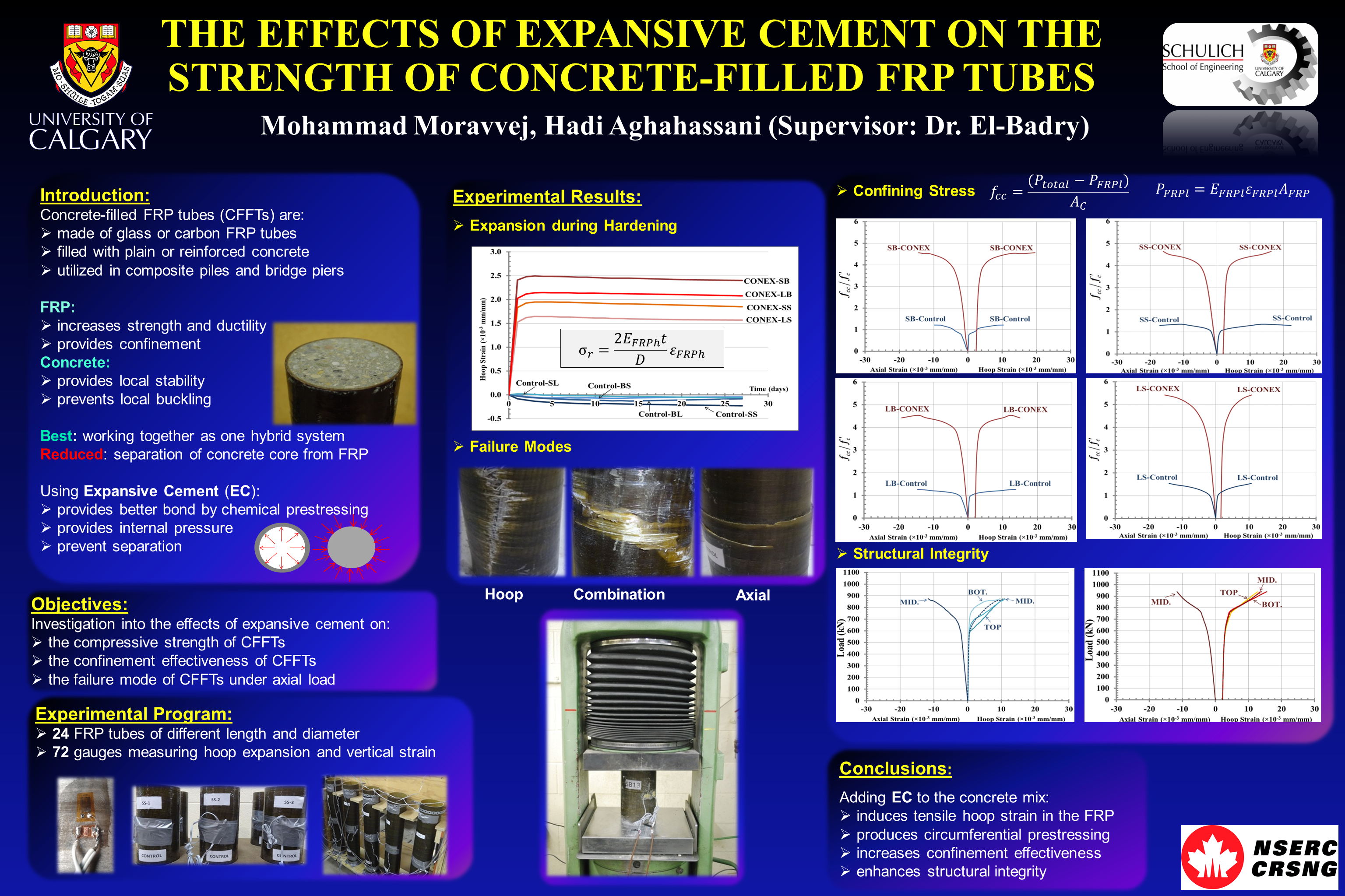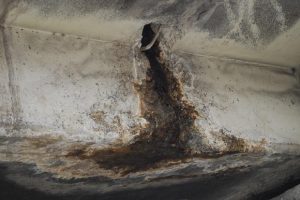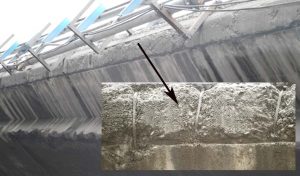Development of a damage identification technique (DIT) for smart structural health monitoring (SSHM) of bridge infrastructure
University of Calgary
May 2014 – May 2018 (Expected)
- Conduct an interdisciplinary research effort encompassing fields of study such as structural engineering, mechanical vibrations, and advanced signal processing techniques (wavelet entropy analysis)
- Design the DIT to be input-independent and reference-free in order to be applicable to in-situ cases
- Implement the DIT in test-induced damage identification in different bridge structural systems including truss girders, strengthened concrete beams, post-tensioned girders
- Evaluate the DIT against varying environmental conditions through exposing test specimens to different environmental conditions in an environmental test chamber
- Evaluate the DIT against varying operational and structural conditions through damage identification under different loading and support conditions as well as damage characterizations
- Predict the remaining service life of bridges using the outcome of the DIT
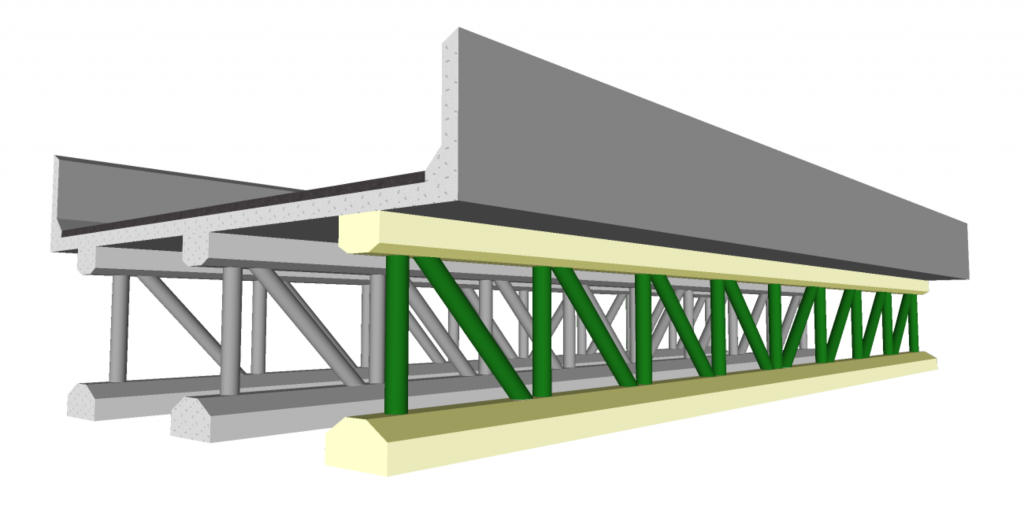
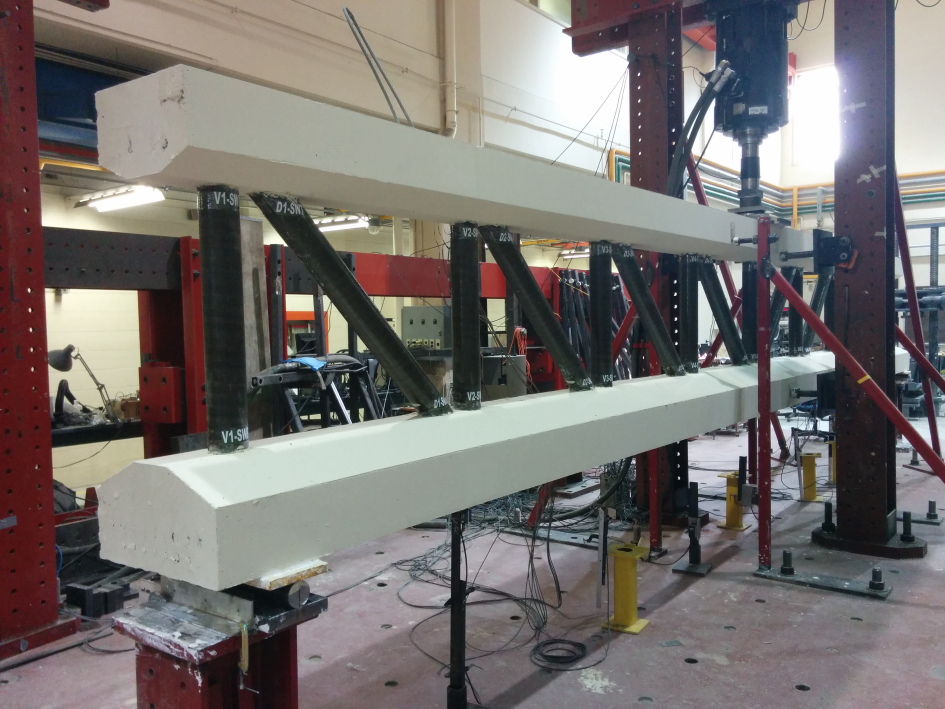

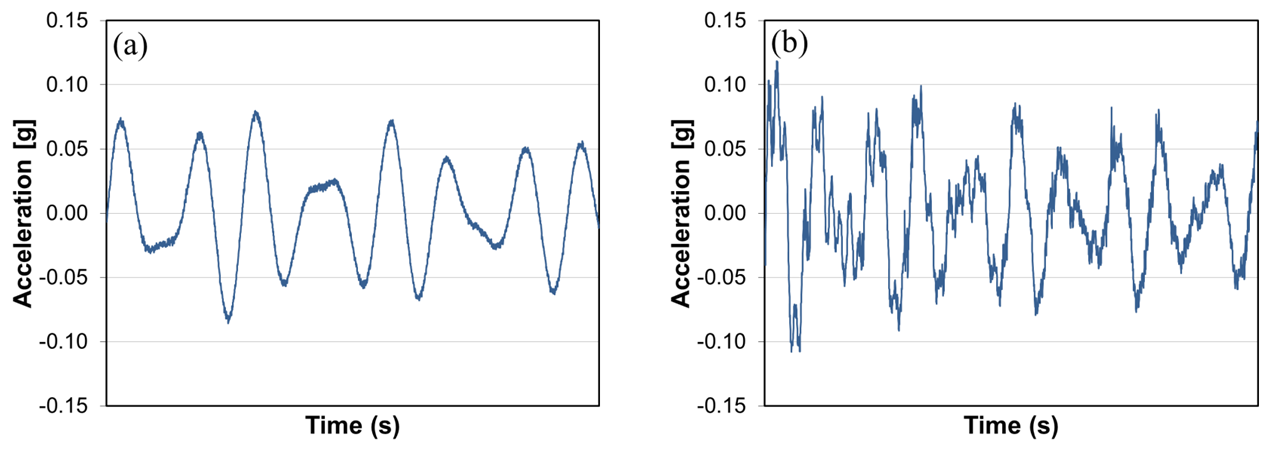



Long-term structural health monitoring of the Deh Cho bridge
University of Calgary
September 2016 – April 2017
- 1 km long truss bridge with cable-stayed span crossing the Mackenzie River at Fort Providence, NWT
- Gained experienced in structural condition evaluation and inspection of existing bridges using OSIM
- Researched the latest technologies, criteria and specifications for SHM of civil infrastructure
- Obtained first-hand information built on site visits and meeting with DOT staff, designers, and operators
Comprehensive study on a precast pre-stressed slab-on-truss bridge girder system
University of Calgary
May 2014 – May 2018 (Expected)
- The system consists of pretensioned top and bottom concrete chords connected by vertical and diagonal truss members made of concrete-filled GFRP tubes and are suitable for short and medium span bridges
- Fabricated a total of eight full-scale truss girders reinforced with steel and FRP rebars
- Tested the girders under static loading and fatigue loading with different loading amplitudes
- Assessed the performance of the structural components of the girders under different loading conditions
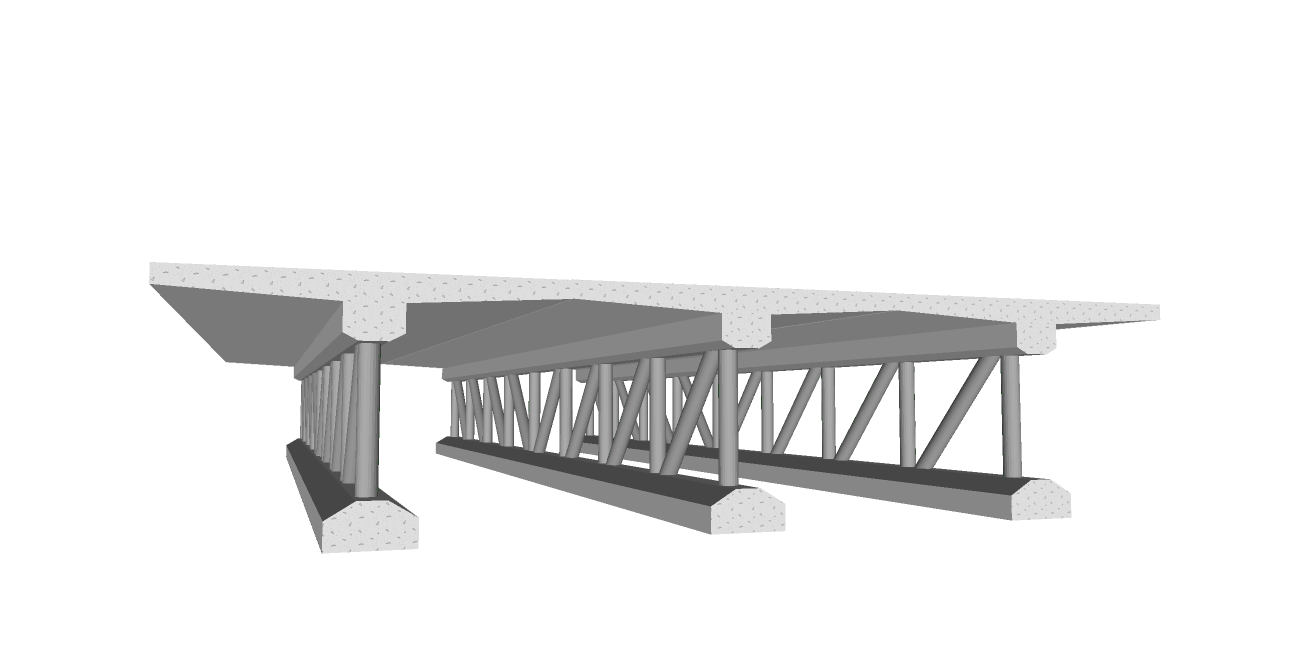

A joint study on image-based structural deformation monitoring techniques
University of Calgary
May 2014 – August 2015
- Fabricated a SRP-strengthened concrete beam and tested under fatigue loading with 3 Hz loading frequency
- Captured 3-D image time series of the beam using a Microsoft time-of-flight Kinect 2.0 sensor
- Evaluated the accuracy of the technique with measurement recorded using laser transducers
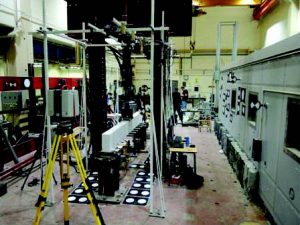
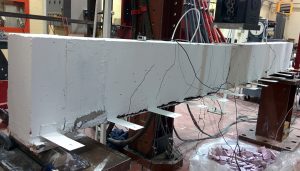
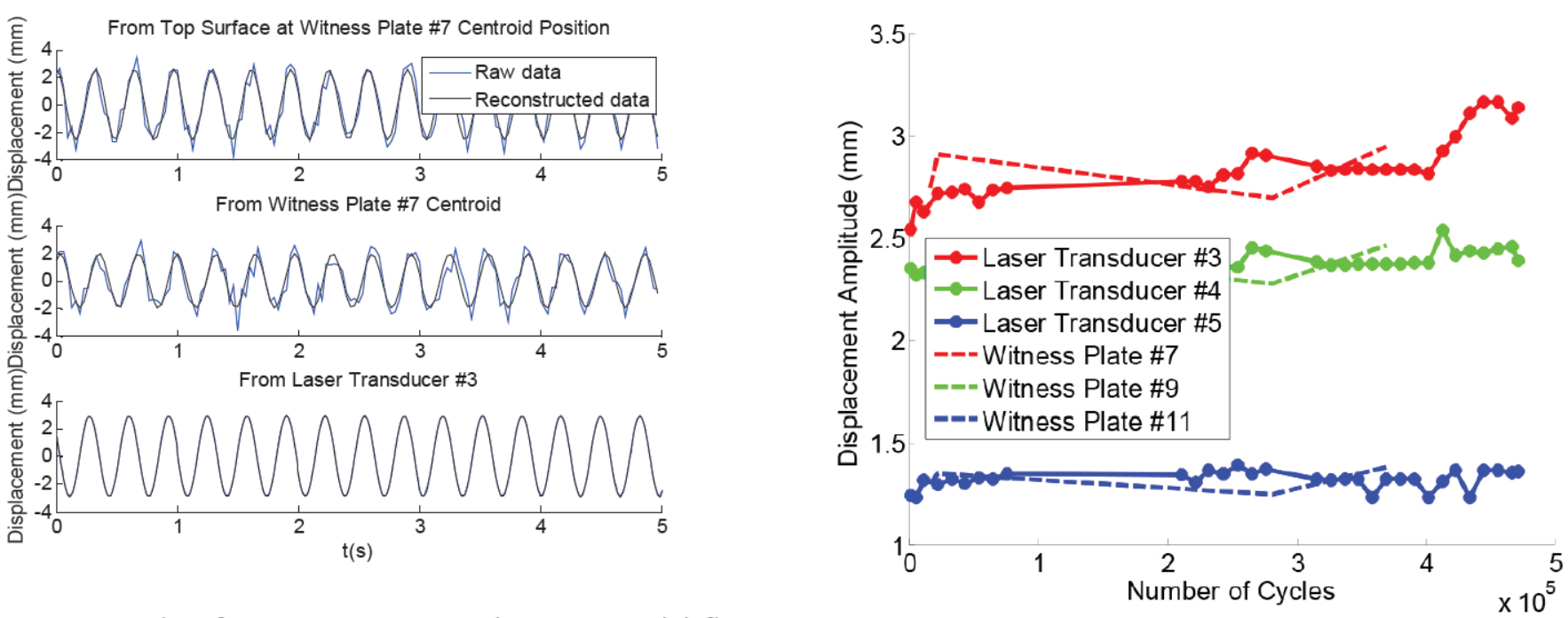
Investigation into an innovative hybrid FRP-concrete truss girder system
University of Calgary
January 2012 – January 2014
- Produced detailed design drawings using AutoCAD for fabrication of test specimens
- Drew 3-D models of the girder system and test specimens using SketchUp
- Fabricated and tested 20 truss girder specimens with varying span-to-depth ratios and reinforcing details
- Investigated the static and fatigue behaviour of the girder specimens under static and fatigue loadings
- Modeled and analyzed the girder system under different loading conditions using CPF and SAP2000
Comprehensive study on the effects of expansive cement on the strength of concrete-filled FRP tubes
University of Calgary
January 2012 – January 2014
- Fabricated +100 concrete-filled FRP tube specimens
- Monitored the expansion of the filling concrete core during hardening
- Performed axial compression and push-out tests using MTS machines to investigate the axial and bond strengths of the specimens
- Investigated the effects of the following parameters on both axial and bond strengths of the specimens:
level of expansive cement, FRP tube diameter, and length-to-diameter ratio of test specimens
Analysis and design of concrete bridges and FRP strengthening systems
University of Calgary
January 2012 – January 2014
- Modeled and analyzed Extradosed, Suspension, and Truss bridges using SAP2000, CSiBridge, and S-FRAME
- Designed FRP strengthening systems for in-service bridges in accordance with CSA S806 and CSA S6
- Designed a FRP strengthening system for a 91.5 m long chimney
- Designed a single span pedestrian bridge consisted of precast prestressed concrete girders using Carbon-FRP cables and a cast-in-place Glass-FRP reinforced concrete slab
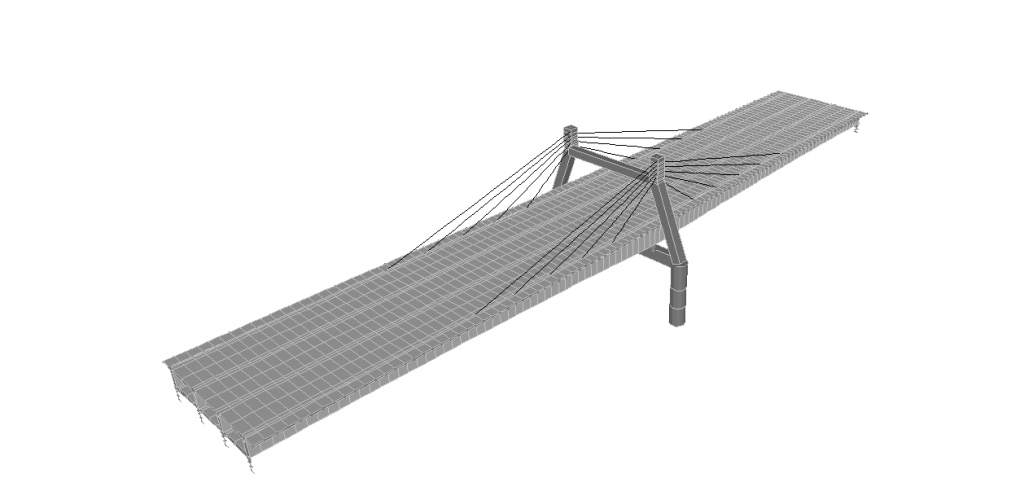
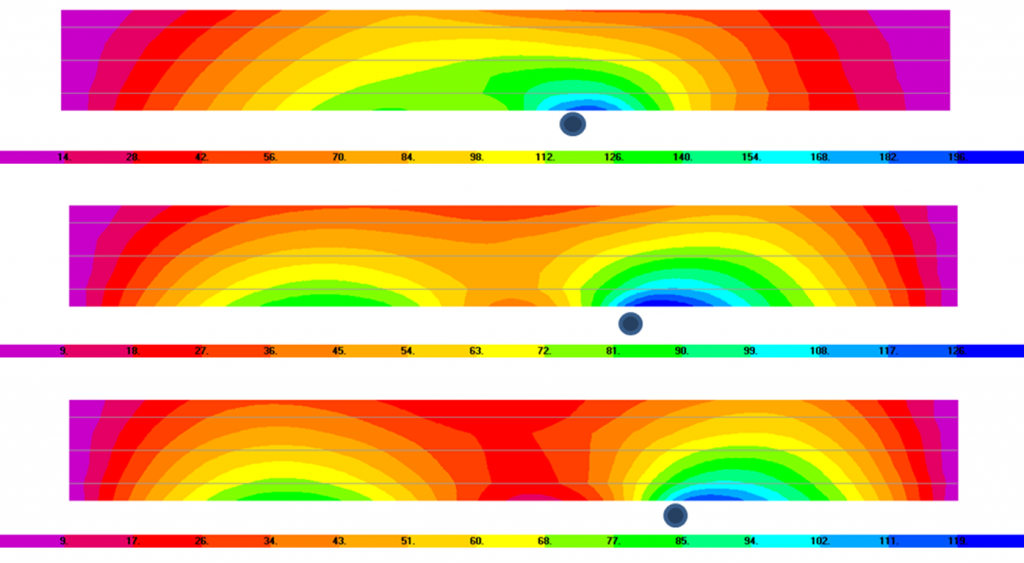
Non-destructive evaluation (NDE) techniques for damage detection in bridge infrastructure
Sharif University of Technology
January 2011 – June 2011
- Experimentally evaluated the accuracy of NDE methods, such as linear ultrasonic and acoustic emissions
- Fabricated a 10 m2 concrete slab with 300 mm depth and different cavity sizes as the test specimen
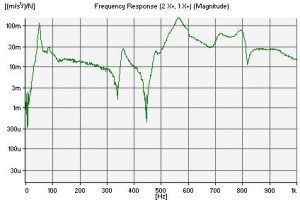
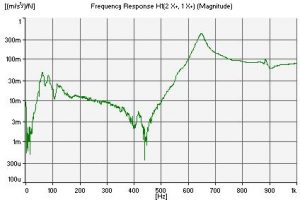
- Studied bridge preservation and maintenance systems employed in the industry
